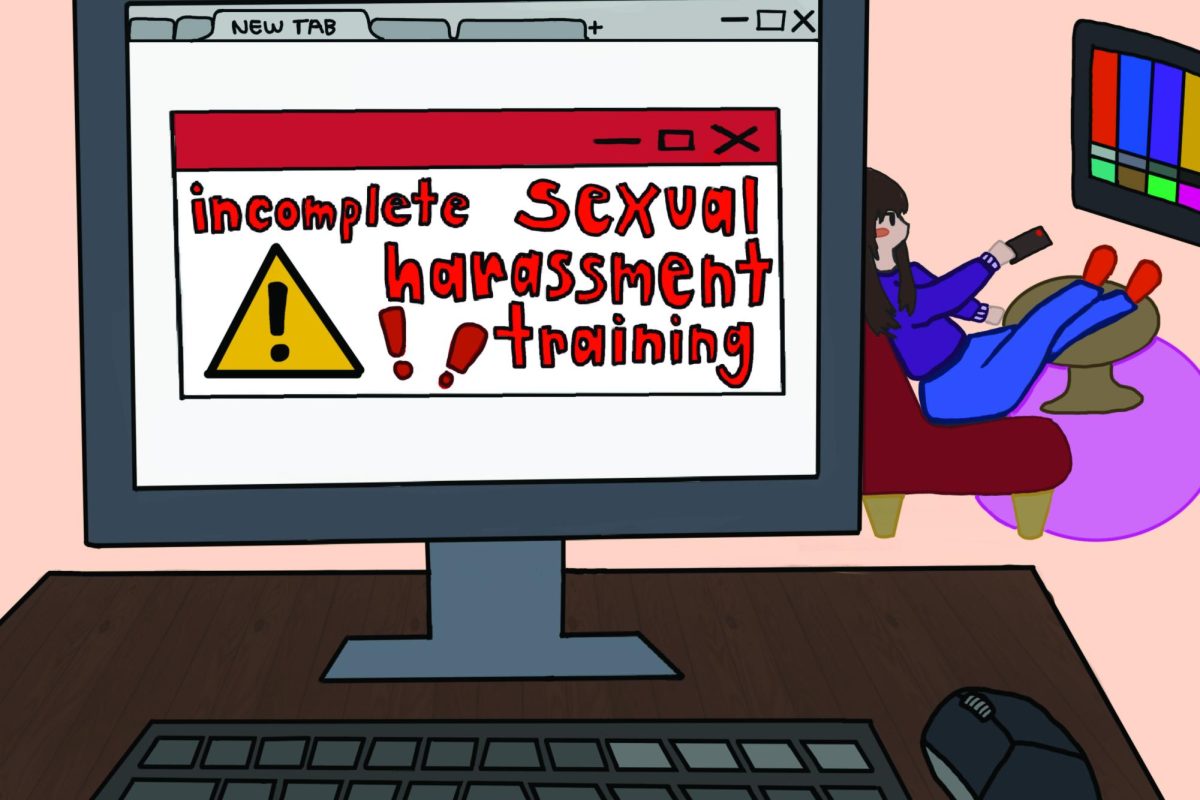As I packed up after class, I began to talk to some of my male coworkers who were in that class. The discussion soon turned to recent work training procedures, and they mentioned they had skipped the sexual harassment training for the past few years. They called it “stupid” and “pointless.” I was surprised and unsettled after learning this, and I rushed to meet up with my female coworker to tell her what happened. When I found her, I recounted the conversation I just had in hopes she would be as appalled as I was, just to find out she had not completed the training either. I was shocked.
The training is online and can be done at each employee’s convenience. It only takes 10 minutes to complete and teaches important lessons about what sexual harassment is, examples in the workplace and how to report it.
One in seven women and one in 17 men have sought new employment due to sexual harassment in the workplace, according to the National Sexual Violence Resource Center. Sexual harassment can happen to anyone, so this training applies to everyone and what it teaches is invaluable.
There are two main types of sexual harassment. The first type is quid pro quo, which is defined as an employer making it clear to an employee that job security is reliant on the delivery of sexual favors. The second type is the creation of a sexually hostile work environment. This can include sexually physical violence, inappropriate sexual comments or unwelcome sexual advances.
Sexual harassment trainings are mandatory in Illinois for a reason.
These trainings are intended to educate employees about unwanted sexual behaviors in an attempt to prevent sexual harassment in the future and equip people with the knowledge to recognize and report behavior that is deemed inappropriate. This is vital knowledge.
Even though these trainings are mandated by Illinois law, many find ways around completing them. Because students may lack understanding of the important information in these trainings, they can end up being unable to recognize personal behavior that could be sexual harassment.
Since some students do not have jobs, they may not have the chance to learn how to identify sexual harassment and how it can be prevented. To make sure everyone receives this necessary information, students need to start a conversation about sexual harassment with their peers and with their parents. To employed students who have the chance to complete sexual harassment trainings through their workplace, do them. Although it is a heavy topic to discuss, students should be making an effort to learn about sexual harassment and its implications. This could be completing work training or talking to parents or peers about it to ensure everyone is educated about sexual harassment.
Students should not ignore sexual harassment trainings just because they believe they will not learn anything from them or because they do not apply to their lives. Choosing to remain uneducated about sexual harassment is dangerous because students may not know what they should be trying to prevent. In order to help prevent sexual harassment, people must first be trained to understand what it is.


